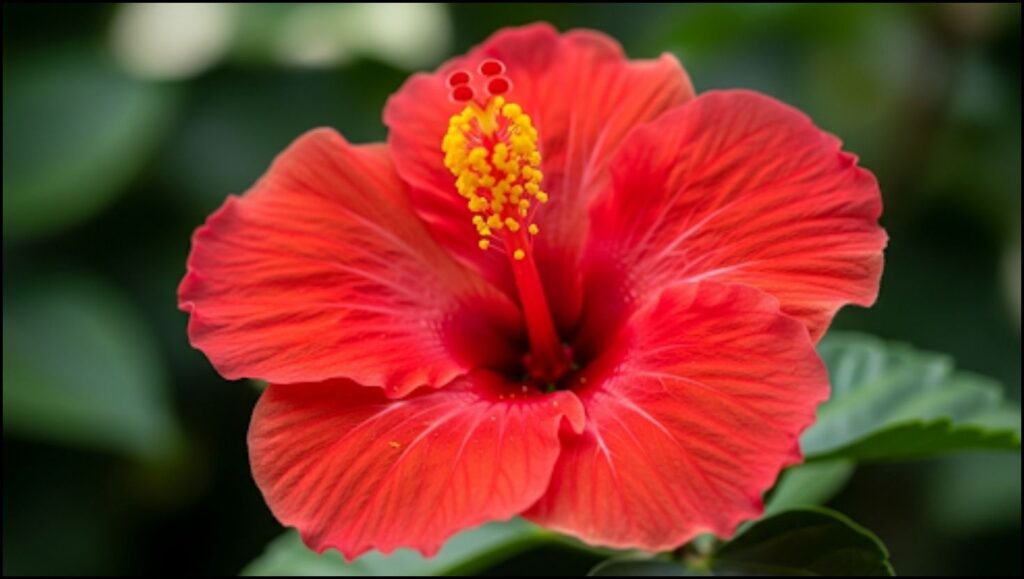For gardeners seeking to add dramatic, vibrant color to their patios and landscapes, few plants rival the show-stopping power of the tropical hibiscus. While their exotic appearance may seem intimidating, learning to start growing hibiscus is an achievable goal for even novice gardeners who follow fundamental guidelines for sun, water, and nutrition.

How to Start Growing Hibiscus
| Key Factor | Detail / Guideline |
| Ideal Sunlight | Minimum 6-8 hours of direct sunlight per day. |
| Soil Requirements | Well-draining, slightly acidic soil with a pH of 6.5 to 6.8. |
| Watering Schedule | Keep soil consistently moist but not waterlogged; water when the top inch is dry. |
| Fertilizer Type | Use a high-potassium (K), low-phosphorus (P) formula to encourage blooms. |
Understanding the Hibiscus: Tropical vs. Hardy Varieties
Before purchasing a plant, it is crucial to understand the two main categories of hibiscus: tropical and hardy. Tropical hibiscus (Hibiscus rosa-sinensis) are the source of the iconic, massive blooms often associated with Hawaiian landscapes. They are perennial only in USDA Hardiness Zones 9-11 and must be treated as annuals or brought indoors during winter in colder climates.
Hardy hibiscus (Hibiscus moscheutos), by contrast, can survive freezing temperatures and will die back to the ground in winter before re-emerging in the spring. While beautiful, their flowers are typically different in form from their tropical cousins. This guide focuses specifically on the cultivation of tropical hibiscus for their sought-after tropical blooms.
How to Start Growing Hibiscus: A Step-by-Step Guide
Successfully cultivating tropical hibiscus hinges on replicating the conditions of their native environment. This involves careful consideration of location, soil composition, and a consistent care routine.
Selecting the Right Plant
Your journey begins at the nursery. Look for plants with deep green, glossy leaves and multiple buds. Avoid plants with yellowing leaves or signs of pests like fine webbing (spider mites) or sticky residue (aphids). Popular cultivars like ‘Brilliant Red’ or ‘Fiesta’ are known for their resilience and prolific flowering.
Location and Sunlight
“Hibiscus are sun-worshippers, plain and simple,” states Dr. Alistair Finch, a horticulturist specializing in tropical flora. “Without at least six hours of direct, bright sunlight, the plant will produce lush foliage but very few, if any, flowers. An ideal spot is a south-facing location that offers some protection from strong winds, which can damage the large, delicate blooms.”
For gardeners in extremely hot climates, some light afternoon shade can help prevent leaf scorch during the peak of summer. Whether in a container or a garden bed, location is the single most important factor for success.

Soil, Potting, and Planting Hibiscus
Tropical hibiscus thrives in well-draining, slightly acidic soil. The American Hibiscus Society recommends a soil pH between 6.5 and 6.8 for optimal nutrient absorption. For container gardening, a high-quality peat-based potting mix amended with perlite or sand to improve drainage is an excellent choice.
When planting hibiscus in a garden bed, amend heavy clay or sandy soils with rich organic matter like compost or aged pine bark. This improves both moisture retention and aeration. Ensure the root flare—the point where the roots begin to emerge from the trunk—sits slightly above the soil line to prevent rot.
Hibiscus Care for Abundant Tropical Blooms
Once established, consistent hibiscus care is what drives the production of continuous, vibrant flowers throughout the growing season.
Watering and Feeding
Proper watering is a delicate balance. The goal is to maintain evenly moist soil, not saturated. A general rule is to water thoroughly when the top inch of soil feels dry to the touch. Plants in containers, especially terracotta pots, will dry out much faster than those in the ground and may require daily watering in hot, dry weather.
Fertilizing is critical for flowering. Tropical hibiscus are heavy feeders but have specific needs. “A common mistake is using a generic, high-phosphorus ‘bloom booster’ fertilizer,” Dr. Finch notes. “High phosphorus can be toxic to hibiscus and will inhibit the uptake of other essential nutrients. Look for a fertilizer with high potassium, or ‘potash,’ which is the key driver for flower production.” A fertilizer with an N-P-K (Nitrogen-Phosphorus-Potassium) ratio like 10-4-12 or 9-3-13 is considered ideal.
Pruning for Health and Flowers
Pruning is not just for shaping the plant; it directly encourages new growth, and hibiscus only blooms on new wood. The best time for a major pruning is in the early spring. Gardeners can safely trim the plant back by about one-third to encourage a flush of new branches where flowers will form.
Throughout the summer, “pinching back” the tips of new shoots after they have developed several new leaves will promote even more branching and, consequently, more tropical blooms.
Overwintering in Colder Regions
For gardeners outside of tropical zones, bringing the plant indoors is necessary. Before the first frost, when nighttime temperatures consistently dip below 50°F (10°C), move the containerized hibiscus inside to a location where it can still receive several hours of bright, indirect light, such as near a south-facing window. Reduce watering significantly during this dormant period, allowing the soil to dry out more between waterings.
The plant will likely drop many of its leaves as it acclimates to the lower light levels indoors; this is normal. When spring returns and the danger of frost has passed, the hibiscus can be moved back outdoors to begin its growth cycle anew.
Homeowners Turn to Low-Maintenance Flower Beds Amid Rising Water Scarcity
